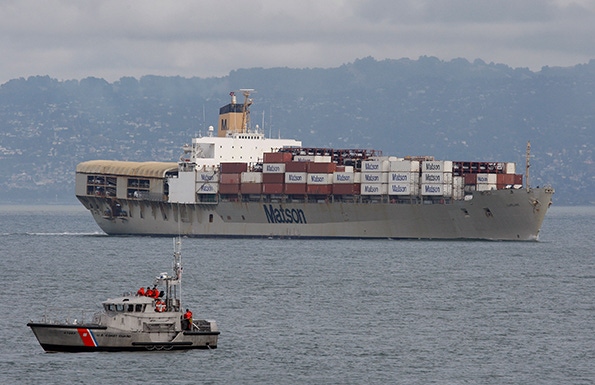Exports are up, but what’s the future of trade deals?
The only bad trade agreement is one that you’re not in, so it’s imperative that the United States can hold its own in existing trade pacts, while also developing new relationships.
October 31, 2017

Export markets have been carrying their weight in 2017, but the lifting may get more strenuous moving forward.
“We’re very pleased with the results that we’ve been able to achieve this year,” U.S. Meat Export Federation CEO Philip Seng says during a Tuesday morning media conference call prior to the USMEF Strategic Planning Conference in Tucson, Ariz. “We’re up about 9% on pork exports” on a volume basis. “With these increases, it’s very clear that the international marketplace and the international component to the industry are actually pulling its weight because our exports are growing at least double to three times faster than our production.”
Seng sees the fact that the pork complex exports are up 9% is “very encouraging news for us because pork has always been a challenge to some degree. Mexico is up about 18%. … We’re watching Mexico because quietly it has become our No. 1 volume destination and it’s a very important market, a growing market for us.”
In addition to Mexico, U.S. pork is also finding its way into the marketplace of other countries around the globe in increasing fashion: South Korea, up 27%, South America, up 96%, and “the Caribbean, ASEAN and even Taiwan has become very good for us,” Seng says.
All that looks good, but then Seng sheds some light on the current trade issues. “Probably the most imminent thing we’re concerned about is as the U.S. goes into its fifth round of negotiations with NAFTA, is for NAFTA itself,” he says. “I think for the whole red meat industry, I don’t think anyone would disagree with me that it (North American Free Trade Agreement) has actually been a beautiful arrangement for the U.S. red meat industry.”
Seng says there is so much more to trade agreements and relationships than simple math of the volume and value of the product. “I’m reminded that in December of 2003, as you know, we had this little episode with BSE (bovine spongiform encephalopathy), and overnight 72 countries closed their door to U.S. beef,” he says. One month later, Canada opened its door to U.S. beef from cattle 30 months and younger, and Mexico did the same in March of 2004. “We were celebrating just a few months ago that China opened its doors, but those two countries, countries that are our neighbors, our closest friends, they opened up within three months’ time. This was very central to the viability of the U.S. beef industry, and to a degree the survivability of the U.S. beef industry at the time.”
Building international markets is about building relationships. Seng shares numbers as a result of the NAFTA pact, from 1994 to 2016, the United States exported $32 billion worth of beef and another $32 billion worth of pork to Mexico and Canada. That level of business is hard to come by, and Seng feels leaving NAFTA would be a bad idea, “even threatening to leave NAFTA is basically a mistake.”
In addition to ongoing NAFTA discussions, Seng also discusses President Donald Trump’s follow-through on his promise to pull out of the Trans-Pacific Partnership, leaving the United States sitting on the sidelines while other countries, such as Australia, form trade accords with Japan. As a result, the United States has a duty of 38.5%, while the Australians have a 27.2% duty, but with a safeguard activated, Seng says the U.S. duty jumps to 50% on frozen product. “This leaves us at a disadvantage,” he says. As an immediate result, Seng says U.S. frozen product was down 26% in August.
U.S. pork producers may miss out even further. As Seng says just recently a major gyudon beef bowl chain in Japan is switching to pork from beef, “that’s a thousand outlets, and so as we look forward at markets where we’re concerned about what’s going on with the trade, it’s already having significant impacts.”
As talk continues about pulling out of current trade agreements, Seng is reminded of the old saying “the only bad trade agreement is the one that you’re not in.” There have been more than 300 different free trade agreements and economic partnership agreements initialed around the world, “and our competitors are working at this assiduously trying to conclude these agreements. … if you’re at a disadvantage in a trade agreement, you’re really disadvantaged,” he concludes.
You May Also Like



